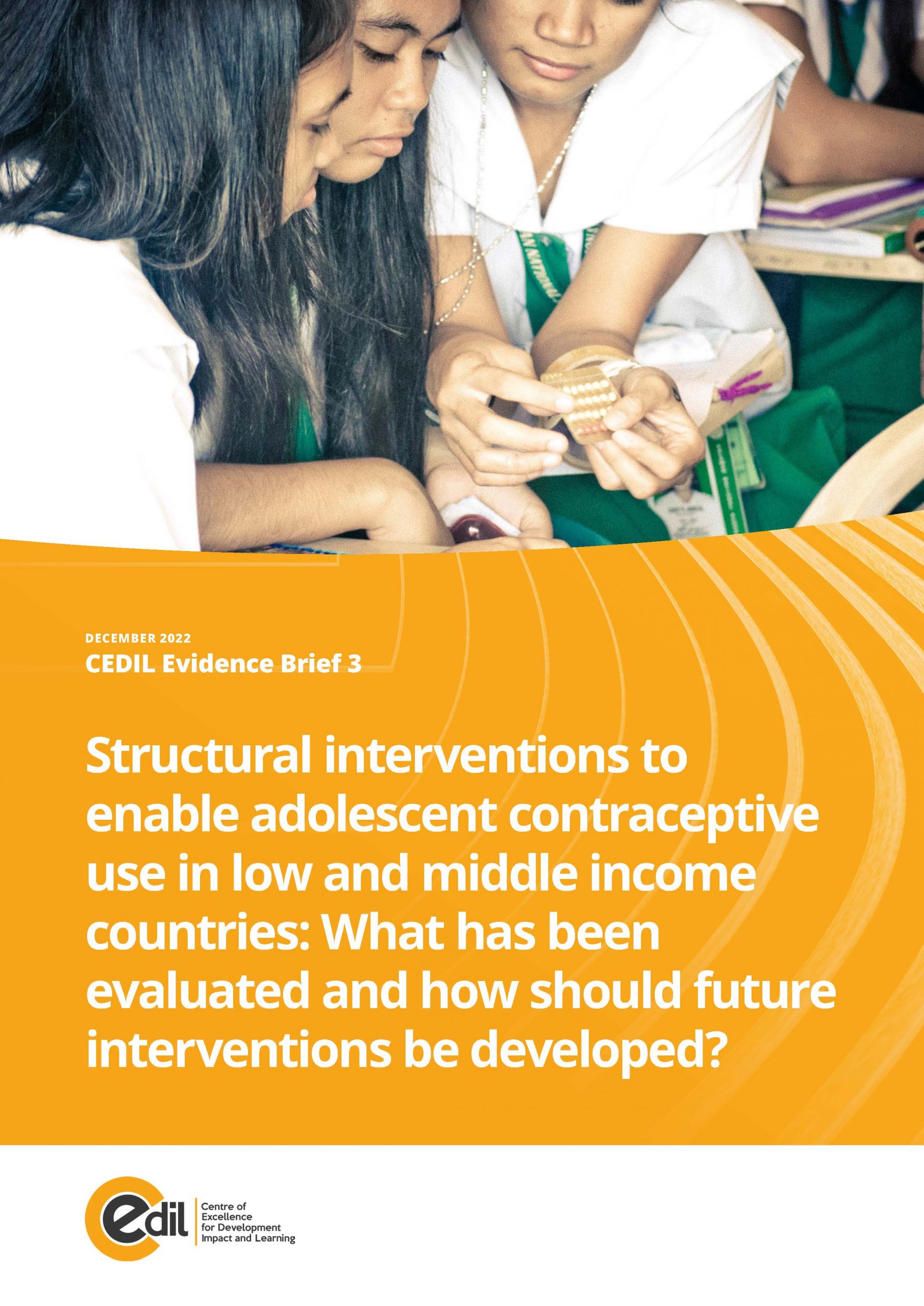CEDIL Evidence Brief 3
Helen E. D. Burchett, Rebecca S. French, Sally Griffin, Malica de Melo, Joelma J Picardo, Dylan Kneale
Adolescent pregnancy rates in low- and middle-income countries (LMICs) are high and reducing these rates is an indicator for Sustainable Development Goal (SDG). Enabling contraceptive use amongst sexually active adolescents is an important way to help address this. Most interventions tend to focus on providing contraceptives and family planning services or information and education to encourage girls to use contraception. However, these interventions do not usually address the broader factors that affect girls’ ability to access and use contraception. Structural interventions are those that address this broader context, such as interventions that aim to increase girls’ education, reduce poverty and/or increase their economic empowerment, or shift social norms around gender, adolescent sexuality or fertility.
This brief summarises the findings of an evidence synthesis that examined structural interventions to enable adolescent contraceptive use in LMICs. The authors identify which structural interventions have been evaluated and offer recommendations on how future interventions could be developed to optimise their impact.
Suggested citation:
Burchett, H.E.D., Griffin, S., de Melo, M., Picardo, J.J., Kneale, D., French, R.S. (2022). Structural interventions to enable adolescent contraceptive use in low and middle income countries: What has been evaluated and how should future interventions be developed? CEDIL Evidence Brief 3. London and Oxford: Centre of Excellence for Development Impact and Learning. https://doi.org/10.51744/CEB3

